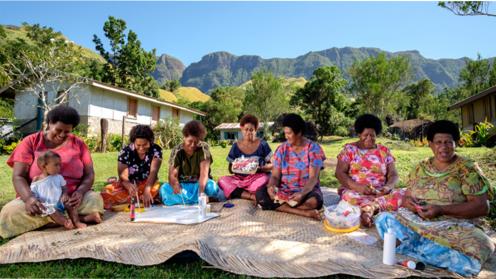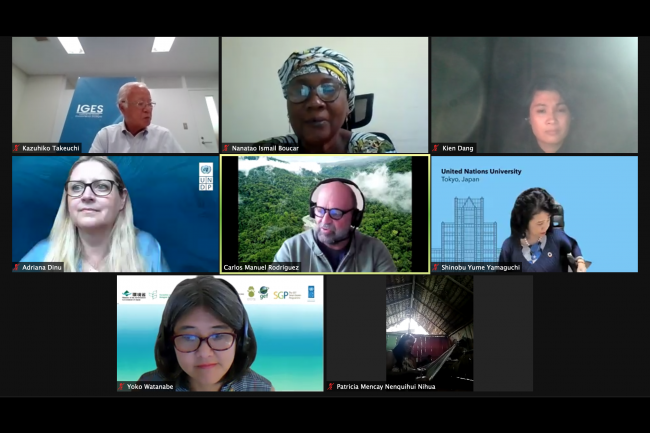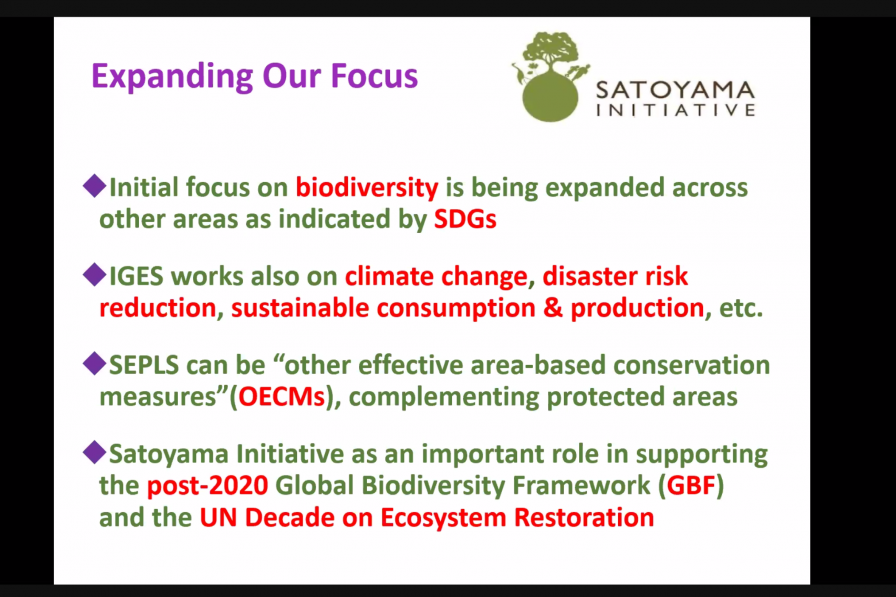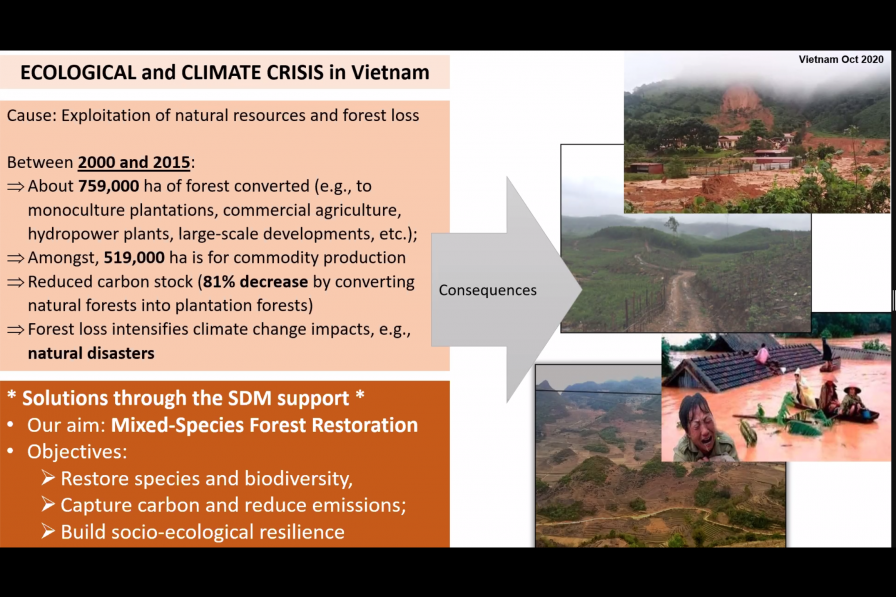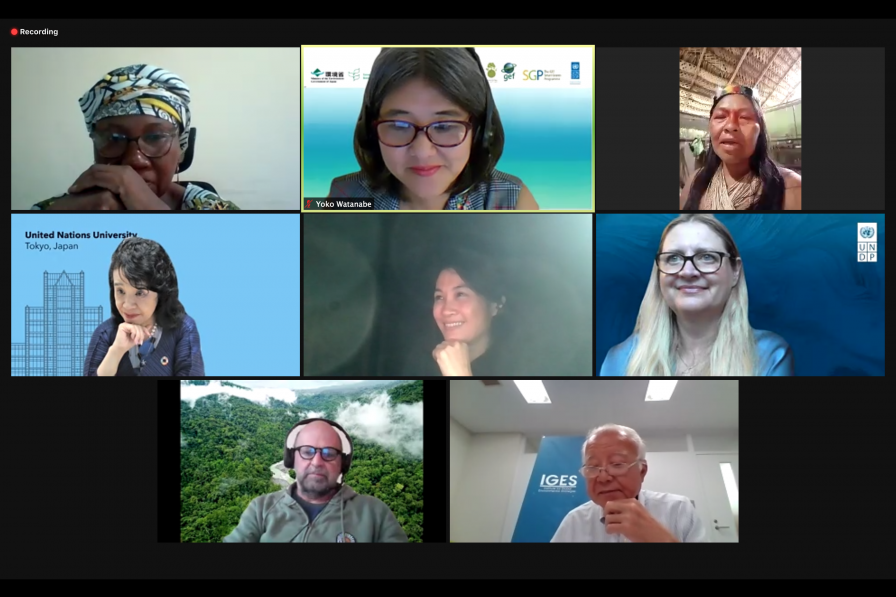Key takeaways from this event included that the Satoyama Initiative brings traditionally siloed issues together and deals with them in a coherent and harmonized manner, and living in harmony with nature requires communities to consider issues of biodiversity, climate change, and zoonotics simultaneously.
The Satoyama Initiative is a global effort to promote the sustainable use and management of natural resources in production landscapes and seascapes with a concept of “Societies living in harmony with nature.” It was proposed by the Government of Japan it its capacity as the President of the 10th meeting of the Conference of the Parties to the Convention on Biological Diversity (CBD COP10) to contribute to the second objective of the CBD on the sustainable use of biodiversity.
This event was organized by the CBD, in collaboration with the Ministry of the Environment of Japan, UN Development Programme (UNDP), Global Environment Facility (GEF) Small Grants Programme (SGP), Institute for Global Environmental Strategies (IGES), and United Nations University Institute for the Advanced Study of Sustainability (UNU-IAS). The event was attended by approximately 150 participants.
Yoko Watanabe, GEF SGP, moderated the session. Reflecting on ongoing work towards the adoption of an ambitious and effective Post-2020 Global Biodiversity Framework, David Cooper, Deputy Executive Secretary, CBD, said experiences under the Satoyama Initiative can help shed light on some of the challenges that must be overcome, and on the successes that are possible on “our path towards our vision of living in harmony with nature.”
Adriana Dinu, Deputy Assistant Administrator, Bureau for Policy and Programme Support, UNDP, said COVID-19 has shed light on humanity’s fractured relationship with nature. She said the Satoyama Initiative provides many lessons in multistakeholder engagement and land-sharing activities. She noted UNDP will continue to amplify local voices and community solutions.
Moderator Watanabe, introduced the Voices from the Field Segment, which included both videos and presentations from individuals currently implementing projects under the Initiative.
Boucar Nanatao Ismail, SGP National Coordinator, Niger outlined participatory landscape planning and implementation approach with stakeholders around the Tabalak wetland, Niger, including removing invasive species, stabilizing sand dunes, and restoring livelihoods.
Patricia Mencay Nenquihui Nihua, President of Asociación de Mujeres Waorani de la Amazonía Ecuatoriana (AMWAE), Ecuador, outlined the increased role of women leaders in her community, as a result of engaging in project activities. She also noted her community has focused heavily on the use of traditional medicines during the COVID-19 pandemic and avoided large-scale infections.
Dang To Kien, Community Entrepreneur Development Institute (CENDI), Viet Nam, shared experiences on planting mixed forest species. She explained these successfully capture carbon, restore ecosystems, and serve to build socio-ecological resilience. Videos from Turkey and Fiji on the local community-led initiatives on integrated landscape and seascape management were also introduced during the segment.
Moderator Watanabe invited panelists to provide Remarks on Implementation. In his intervention, Kazuhiko Takeuchi, President, IGES, noted the Initiative was initially biodiversity-focused, but was increasingly focused across all the SDGs, recognizing that landscape and seascape issues cannot be dealt with in silos. In addition, Shinobu Yume Yamaguchi, Director, UNU-IAS, noted the importance of science-based knowledge as well as indigenous and local knowledge for innovation and transformative change toward a sustainable society.
Sasagawa Hiroyoshi, State Minister of the Environment, Ministry of the Environment, Japan, noted the Post-2020 Biodiversity Framework should have great affinity with the Satoyama Initiative. He also said activities under the Initiative can contribute to adapting to and preventing climate change, as well as preventing future pandemics. Hiroyoshi stated Japan’s further commitment in support of the initiative and stressed it is time to take a fresh look at how humanity can live in harmony with nature.
Carlos Manuel Rodriguez, CEO and Chairperson, GEF, reflected that for many years work on natural resources has been approached in a piecemeal manner. He noted the Satoyama Initiative brings traditionally siloed issues together – and on that basis is the best vaccine for COVID-19, as it addresses biodiversity, climate change, and zoonotics simultaneously. While praising this nature-based solution, Manuel Rodriguez highlighted the challenge of upscaling its great successes. He underscored that the time is now for moving from siloed approaches within separate national ministries to integrated approaches, where ministries work together.
To receive continuing coverage of this event delivered to your inbox, subscribe to the ENB Update newsletter.
